Complementary and Alternative Medicine No Longer in the Shadows:
Public demand causes integration of new methods and approaches
(HealthDay News) – What was once considered either old-fashioned or “far out” in the medical world is getting another look. And sometimes that new look can bring about different ways to treat diseases and conditions.
According to a nationwide survey conducted in 2002 and published this past May by the U.S. government’s Centers for Disease Control and Prevention (CDC), more than one-third of U.S. adults had used at least one form of complementary or alternative medicine ( CAM ) in the previous 12 months. The federal study defined CAM in terms of 27 diverse medical and health care systems, approaches, practices and therapies that are not currently used in many conventional medical settings in the United States.
According to the University of Maryland School of Medicine, although the name CAM is applied to a wide range of treatment and diagnostic techniques currently outside of traditional medicine in this country, it may be used in conjunction with conventional medicine (thus the name “complementary”), or it could be complete systems (thus the name “alternative”) in their own right, like traditional Chinese medicine.
As the university’s report also points out, many of these techniques have deep historical and intellectual roots in the cultures of other countries and have been around for hundreds, if not thousands, of years. In fact, for more than 70 percent of the world’s population, they are not “alternative” but the primary approach to health care.
For Americans, CAM approaches include provider-based therapies, like acupuncture, chelation therapy ( removing a heavy metal like lead from the bloodstream) , hypnotherapy and chiropractic, as well as therapies that do not require a provider, such as use of herbs or botanical products, special diets, megavitamin therapy, journaling, meditation and prayer focused on health or medical conditions.
Overall, the CDC survey showed that CAM use in the United States is highest among women, educated people, individuals who have recently been hospitalized and former smokers.
The most common conditions for which CAM is used include back problems, colds, neck problems, joint pain or stiffness, and anxiety or depression.
Practitioners of both alternative and traditional medicine agree that the blending of the two disciplines is becoming more accepted.
Dr. Allan Magaziner, an osteopath who runs the Magaziner Center for Wellness in Cherry Hill , NJ., says he believes the trend has just begun.
“The move to embrace alternative and complementary therapies is gaining momentum,” says Magaziner. “It’s being driven by a public with access to more health, wellness and medical information than ever before, in part, because of the amount of content available on every conceivable condition, illness or medical concern around the clock [on the Internet.]”
“Women and men are asking their doctors questions about the CAM practices they’ve read about and discussed with others on the Internet,” Magaziner adds. “Access to this information is driving a new consideration and integration of many approaches that until very recently were considered by doctors to be fads or frills. Doctors can’t ignore these queries, because they hear them every day, from patients of all types.”
One alternative procedure that Magaziner believes is effective is chelation therapy. “Chelation therapy saved my parents’ lives,” he said simply.
Chelation therapy uses an intravenous (IV) approach to introduce a man-made amino acid into the bloodstream. According to Magaziner, the therapy is a proven method to remove heavy metals, such as lead, from the body, and it may also be useful in treating heart disease. His clinic is among 80 sites nationwide involved in a $30 million clinical trial sponsored by the U.S. government’s National Institutes of Health to determine if chelation therapy actually has a positive effect on cardiac functioning.Dr. Keith Berkowitz, who is medical director at the Center for Balanced Health in New York City , says many conventional physicians are becoming more open to alternative and complementary therapies even before clinical trials have fully confirmed their value.
He points to the availability of acupuncture in many hospitals, along with the widespread use of massage. And, says Berkowitz, the integration of supplements and herbs with diet and prescription medication is a sign of the shift that’s underway to meld once-marginal therapies with mainstream medical techniques.
“When I was in medical school, I learned close to zero about nutritional approaches, herbal medicine, vitamins or minerals,” Berkowitz says. “When I first saw patients in the hospital who were taking vitamin C, it scared me. I didn’t know whether it was good or bad for them.
Berkowitz views his profession as increasingly open to and accepting of CAM therapies and approaches.
“Nutritional supplements – such as glucosamine and chondroitin (substances to help with damaged cartilage, which are now in government clinical trials) – and vitamin therapies have become first-line treatments for medical conditions,” he explains. “There also is increasing coverage of CAM in mainstream medical journals, as well as in newspapers and magazines and online websites accessible to everyone.”
Berkowitz also believes the 2002 CDC study may have understated CAM ’s impact.. “I estimate that close to 80 percent of Americans are using something that until very recently would not be considered as a conventional approach to a disease or health condition,” he says. “This includes dietary approaches, as well as vitamin and mineral supplements, massage and many other CAM practices that are becoming too widely used and integrated into mainstream practice to be considered ‘alternative.’”
In fact, many CAM practitioners have recently adopted a new name – “integrative medicine” – to describe their diverse therapies and approaches.



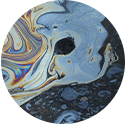

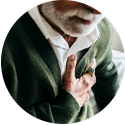
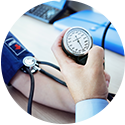
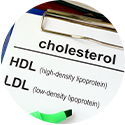

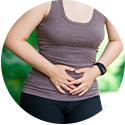



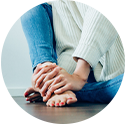

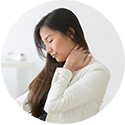



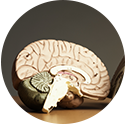



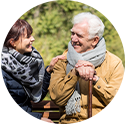
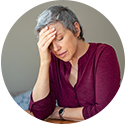


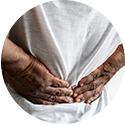








Recent Comments